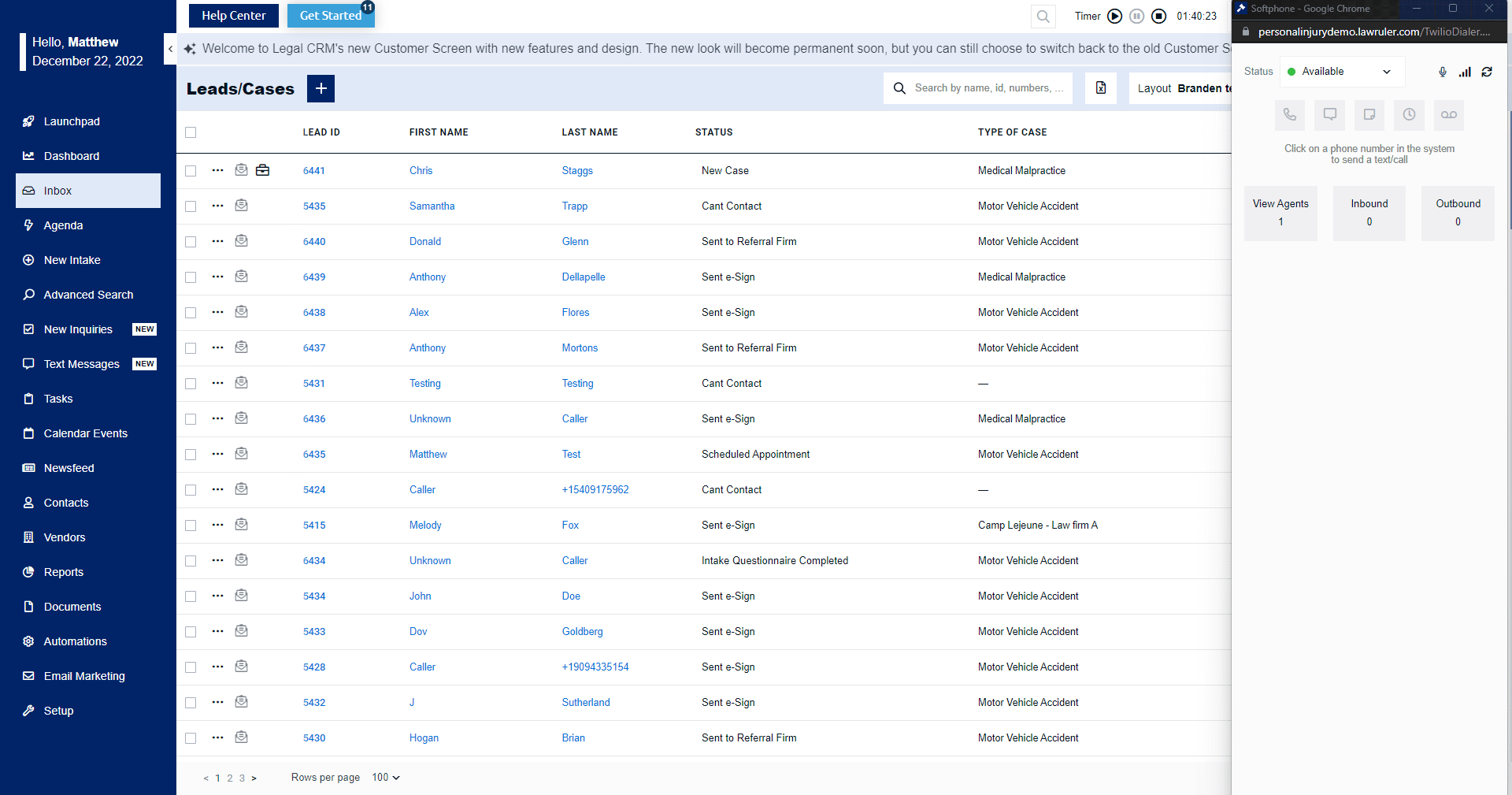PracticePanther, the comprehensive law practice management solution focused on small to medium-sized law firms, spends a lot of time listening to its users. This ongoing conversation helps it refine and expand its features to serve its growing customer base better. Recently, Jonathan Prosperi, product manager at PracticePanther, sat down with Lawyerist’s Zack Glaser to talk about their approach to product development and some of the changes rolling out to customers in the latest updates.
PracticePanther’s Approach
PracticePanther works with clients and partners to ensure it’s building the best, newest, and most thoughtful features to empower law firms and help customers have a better, more complete experience. All the changes Jonathan highlighted emerged from his team’s conversations with end users.
Product managers meet with users to know on-the-ground needs—no guesswork or ivory tower theorizing. Any PracticePanther client can request a meeting with Jonathan directly within the application. These meetings help people feel connected to the platform, be heard by the company, and know their ideas are going somewhere.
The result? PracticePanther frequently updates their platform to enhance their user experience. In this instance, they implemented ways to make current workflows faster and increase control of matters and financials. Here, the team made simple but effective user enhancements that illuminate existing powerful tools.
User Input Drives Feature Enhancements
PracticePanther’s workflow and interface improvements focus on activities, intake, matters, billing, and system performance.
Increased Visibility of Firm Activities
With a new firm Activities screen, leadership can keep a watchful eye on their processes and efficiency with ease. PracticePanther’s Activities screen shows all tasks and events within the system. Previously users could set task due dates and mark them completed. Activities now show the completed date alongside the due date, making it easier to see firm productivity. Users can separate these two data points in the Activities window and view them side-by-side in columns.
Default Intake Form
PracticePanther provides a new default intake form with “most requested” questions, so it’s immediately usable by new firms. Rather than leaving it up to the attorney to make a form, the platform lets users hit the ground running. When prospects complete the intake questionnaire, that information flows directly into PracticePanther.
Flexibility is essential too. PracticePanther makes it simple to add and remove questions to fully customize the form to meet each firm’s needs.
Enhanced Matter Visibility
PracticePanther has also added the ability to see the corresponding rate in the matters list. Each matter could, and still can, have its rate set by matter type or user. Customers can now see the rate in the matter list and the report tables. They can also quickly sort or filter by rate.
Additionally, users can now archive matters. If a potential new client doesn’t convert or a matter is paid out the firm doesn’t completely lose the data. Previously, the only option was to delete matters. Now, users can easily look back at previous case information without cluttering their working dashboard. Archiving matters removes them from the active list without eliminating them from the system. It speeds up searches, removes unnecessary information from reports and filters, and declutters the user’s view.
Greater Billing Flexibility
Daily or monthly billing rituals have been made easier with the updates to financial tracking and contact-level invoices in PracticePanther.
For any matter, the unapplied dollar amount is money the firm holds in its operating account. This is cash it has received from a client for a matter, but not yet applied against that matter’s balance. With a recent change to the matter list, users can now see the unapplied amounts in the default view. Additionally, users can quickly determine which matters have earned and paid money that merely needs to be applied against an invoice.
A second change to billing concerns contact-level invoices. When one client has multiple matters with the firm, is it preferable for the invoice to list matters by name or by matter number? PracticePanther employees and users hotly debated the topic, with about 50% on each side. So, developers did the sensible thing and allowed users to organize matters either way on invoices.
Small changes like these permit users to work quicker in ways they want to work.
Accelerated System Performance
The final focus area for recent revisions is general system performance. PracticePanther sped up lots of little things. Each second saved may seem inconsequential in isolation. But you’ll notice the benefit with bulk operations like generating invoices—particularly during “rush hour” at the beginning of the month. Similarly, PracticePanther improved global search speed and the display and refreshing of data tables. For example, the data just snaps in when generating a report housing dozens or hundreds of clients. Snappy and seamless performance is one of those things that never makes the “cool feature” checklist, but users appreciate it every day.
As Jonathan said, the folks at PracticePanther want to “make sure people feel good about using our software.”
Check Out PracticePanther
Our video conversation and the five items above highlight only a few of PracticePanther’s ongoing enhancements. If you’re a current user, visit their release notes section to learn what’s new and upcoming.
If you’re not already a user, learn more by visiting www.practicepanther.com or contacting Jonathan at jonathan@practicepanther.com, who’d be delighted to hear from you. The ethos of PracticePanther comes through in listening to customers, continually improving the product in big and small ways that make a daily difference, and the words Jonathan closed with: “I take a lot of pride in connecting with people who care about our product. I want to know what they’re thinking about, what they want to see in the future, so I make myself available.”
